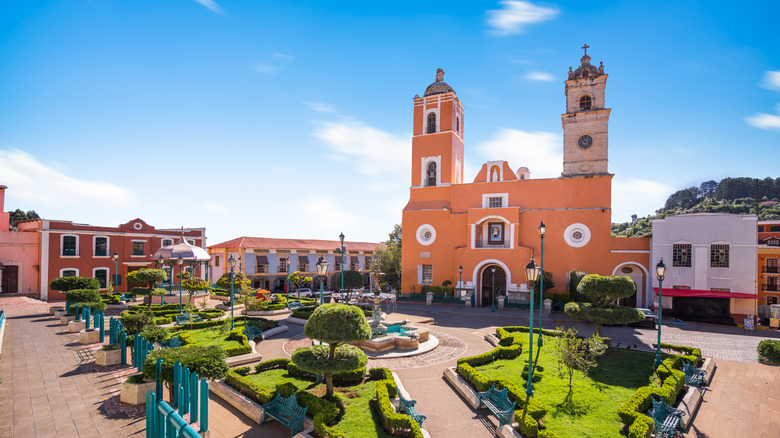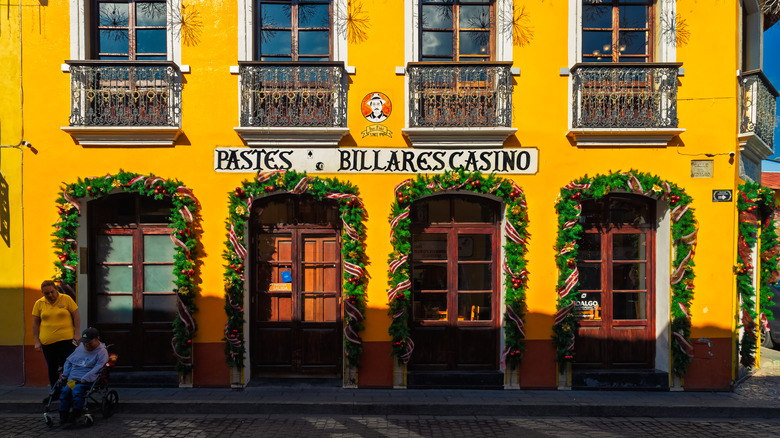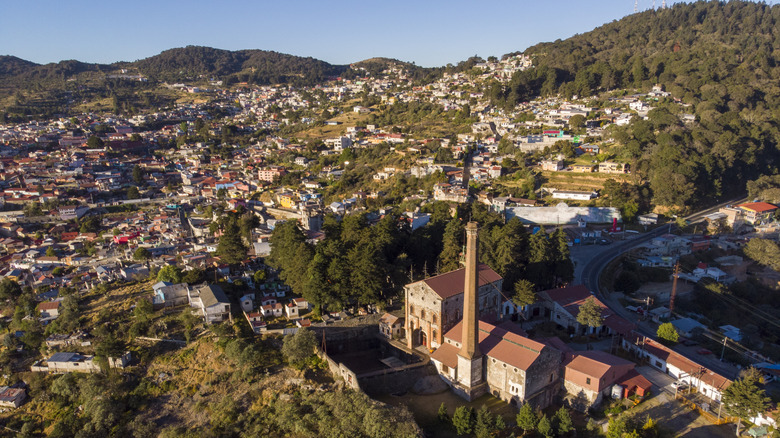Mexico's 'Little Cornwall' Is A Hidden Mountain Town Full Of Rich History And Charm
Mexico is full of unusual and interesting places. It's a country full of surprises, where you might be swimming beneath crystals in an underground river one minute, and exploring otherworldly bubblegum pink lakes the next. While many people view Mexico through a stereotyped lens, it's far more than just gorgeous beaches and jungle adventures. From dramatic mountain landscapes and vibrant, exciting cities filled with music and great food to fairytale towns and immersive art exhibits that transport you to heaven on earth, there are so many weird and wonderful places to explore.
For travelers looking to discover Mexico's alternative side, heading away from the coast and visiting its beautiful Pueblos Magicos is a great start. These are unique, fascinating towns and villages that have been recognized by the Mexican government for their magical qualities, whether due to their rich history, vibrant cultural traditions, or natural beauty. One of the most interesting is the little town of Real del Monte, hidden away in the mountains of Hidalgo, which offers an unexpectedly British flavor of Mexican magic for travelers.
Real del Monte, also known as Mineral del Monte, is perched on a mountain pass in the state of Hidalgo in east-central Mexico, just outside the town of Pachuca to the northeast of Mexico City. It's around 65 miles from the center of Mexico City, around 90 minutes to two hours by car or bus. It's about 70 miles and an hour-and-a-half from Mexico City's main international airport, Benito Juárez, which is served by routes from across the US and around the world. It's also about 50 miles from Felipe Angeles international airport, which is served by a number of routes across North, Central, and South America.
An intriguing Cornish culinary import
At first glance, Real del Monte might seem like any other Mexican mountain town. Beautiful and picturesque, surrounded by stunning landscapes, but otherwise offering a similar experience to plenty of other spots scattered in the hills and mountains around Mexico City. The central plaza is a lively, bustling place, surrounded by colorful houses and an eye-catching church, and the colorful town "letters" offer a fun background for the compulsory snap for social media.
But look a little harder and you'll notice something quite out of the ordinary. Alongside the traditional taquerias and fondas, signs for pasties or 'pastes' abound. Restaurants with names like Pastes London stand out, and there are images of Big Ben, red phone boxes, and British and English flags outside several restaurants, as well as the even more surprising sight of several St. Piran's Flags, the symbol of Cornish nationalism and independence. This feels like a little slice of Cornwall hidden away in central Mexico, and is officially twinned with the Cornish town of Redruth!
Real del Monte was once a significant silver mining town, and was developed by Cornish migrants in the 1800s who came to bring their expertise to the British-owned mines. They also brought traditional Cornish pasties with them, now a staple of the cuisine of Hidalgo, and Real del Monte was the site of the first football match ever played in Mexico (there's a plaque on the local football field). Today, the pastes cooked in Hidalgo might cause a stir among Cornish traditionalists, with ingredients like chicken tinga, pork al pastor, and even raspberries and cream cheese, but they are undoubtedly the same delicacies as the ones famous in the west of England.
The land of the Silver King
Beyond the delicious and incongruous cuisine, the main attraction of Real del Monte is its wonderful silver mines and rich history. The mining region around the town is one of the largest and most productive in the history of the world, having produced around 1.2 billion Troy ounces of silver and 6.2 million ounces of gold since they opened, around 6% of all silver mined in the world since the 1500s. There have been mines here since the Spanish conquest of Mexico, but production really took off when they were bought in the 19th century by a British businessman named Francis Rule, known as the Silver King.
The Acosta mine was one of the Silver King's largest and most productive operations, and has been transformed into an immersive museum experience, where visitors can don hard hats and descend 1,312 feet to explore the shafts and tunnels that once rang with the sound of picks and hammers. It's an atmospheric and entrancing experience, giving you the chance to experience the harsh working conditions faced by 19th-century miners for yourself.
The rest of the area is filled with historic curiosities showcasing the influence that the abundant silver mines had on the region. Overlooking the town, the Cornish (or English) cemetery is filled with gravestones and crypts with English names, while the Museum of Occupational Medicine occupies the old hospital built by British immigrants in 1908 to provide medical services to the miners. Further afield, the Casa Rule is a magnificent French Renaissance-style mansion that was once the home of Francis Rule, the Silver King, and now stands as Pachuca's town hall.


